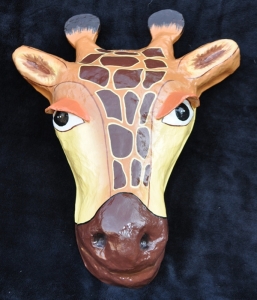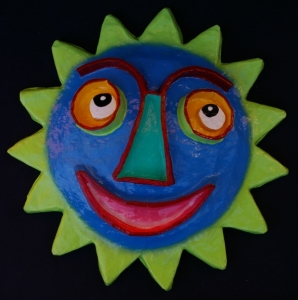Masks and the Spirit of Carnival
In just under three weeks, the solemn Christian season of sacrifice and restraint known as Lent will begin. With all of its associated forbearance, however, observance of the Lenten season will be preceded in many parts of Christendom by the joyful, blow-it-all-out celebration of Mardi Gras, or Carnival.
Carnival revelry is conducted with great exuberance in Haiti, but nowhere more enthusiastically than in Jacmel. Throughout its environs, preparations for the spectacular Carnival parade are undertaken weeks in advance. Bands gather and practice, dancers choreograph and rehearse, costumes are designed, sewn and decorated, and perhaps most extravagantly, larger paper mache masks are prepared. It is because of this extraordinary celebration that Jacmel has become the creative locus for paper mache products of all kinds. Small serving bowls, decorative items, stand-alone sculptures, and most importantly masks have put Jacmel on the map for this particular type of folk art form.
The masks of Haitian Carnival are of every conceivable theme and style. Some are caricatures of historical figures, current politicos, or pop-culture icons. Some are of animals or birds, which may be indigenous to the island, a faraway jungle, or the far reaches of fantasy. Both playful and ceremonial, these masks are often worn to depict an older, wilder Haiti dancing through the streets in a chimerical parade. (Click here to see a photo essay of the Carnival parade in Jacmel in 2011 http://goatpath.wordpress.com/2011/03/01/haiti-carnival-2011/ )
The basic steps required for paper mache mask-making are actually rather simple. Strips of paper are dunked in a soupy mixture of flour and water and
placed over a base form, usually of clay. The paper is allowed to dry for several hours to form a rigid outer shell. Once removed from the base form, embellishments of paint, glitter, sequins, yarn, and more are applied to the mask. (Click here for a video demonstration: http://www.youtube.com/watch?v=2eyN_7XnJo8 ) God, of course, is in the details, and masters such as Didier Civil, Pierre Edgard Satyr and Tidier Lavoyant have achieved such skill as to have their work collected world-wide.
Whether museum worthy or just for fun, Haitian masks are authentic pieces of folk art that can make a decorative statement of joie de vivre. The spirit of Carnival – anytime!
Contributed by Linda for Beyond Borders/It’s Cactus


